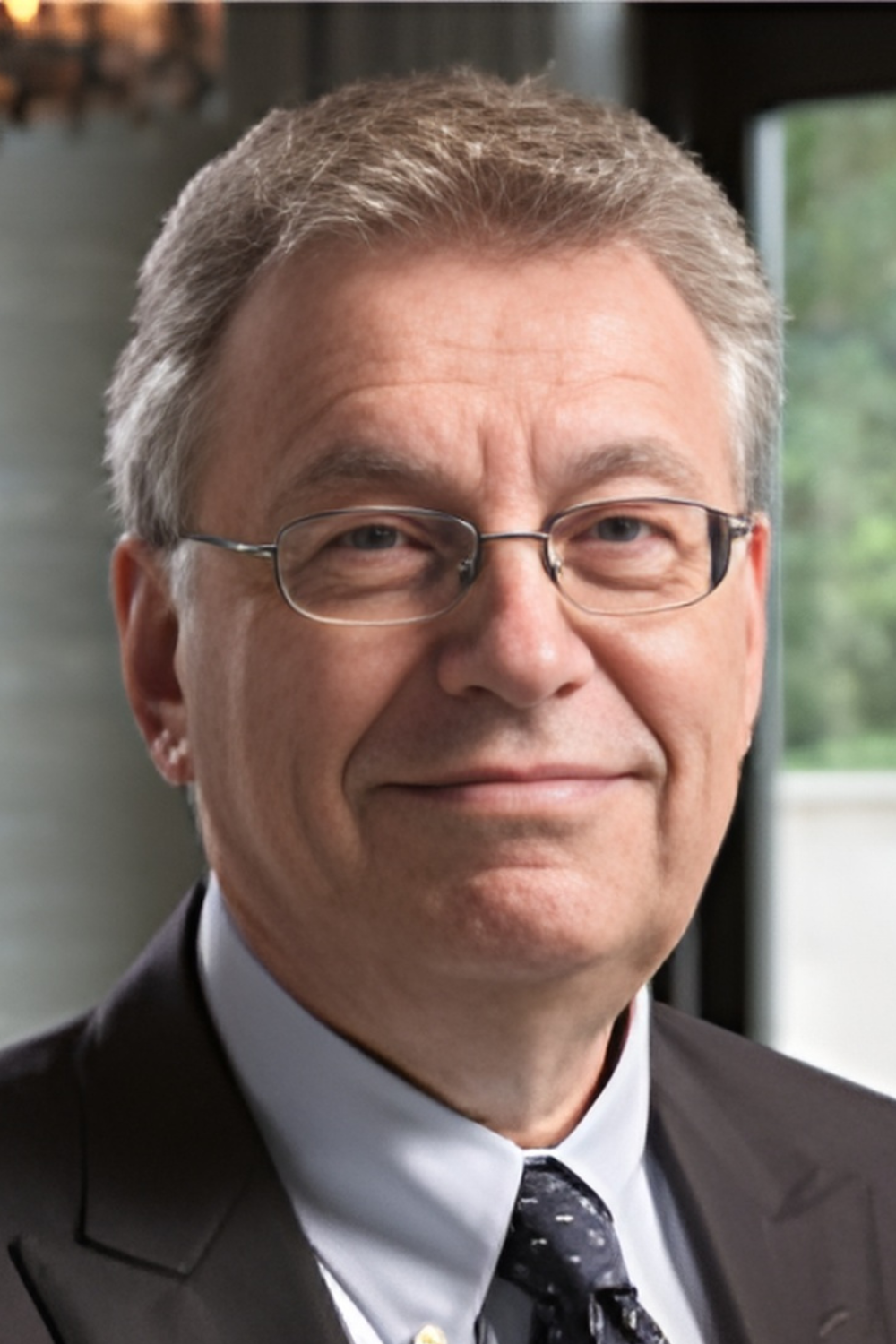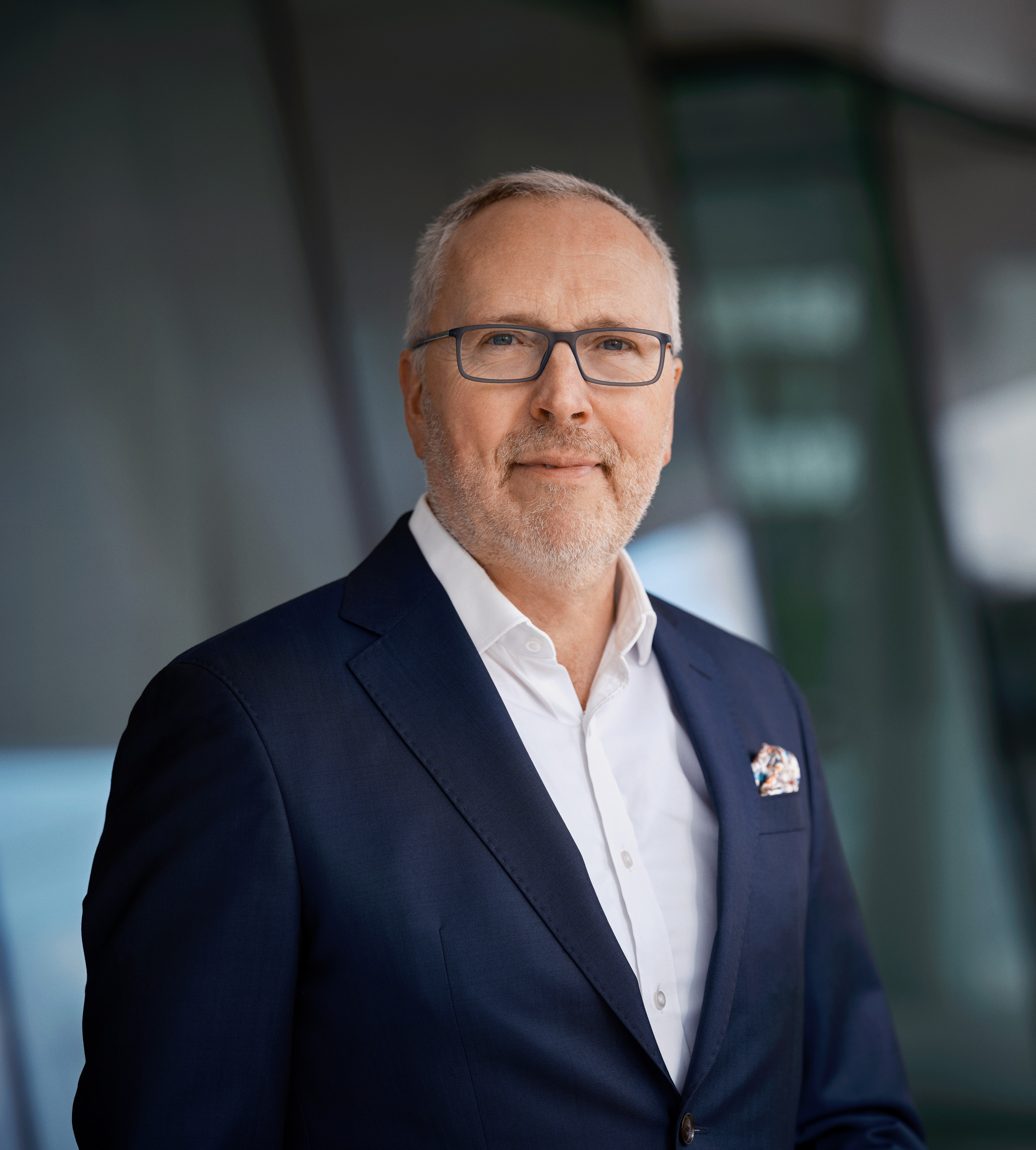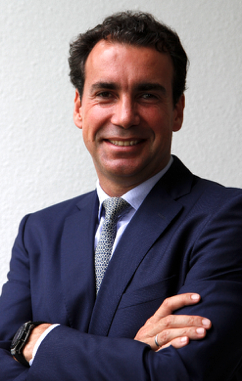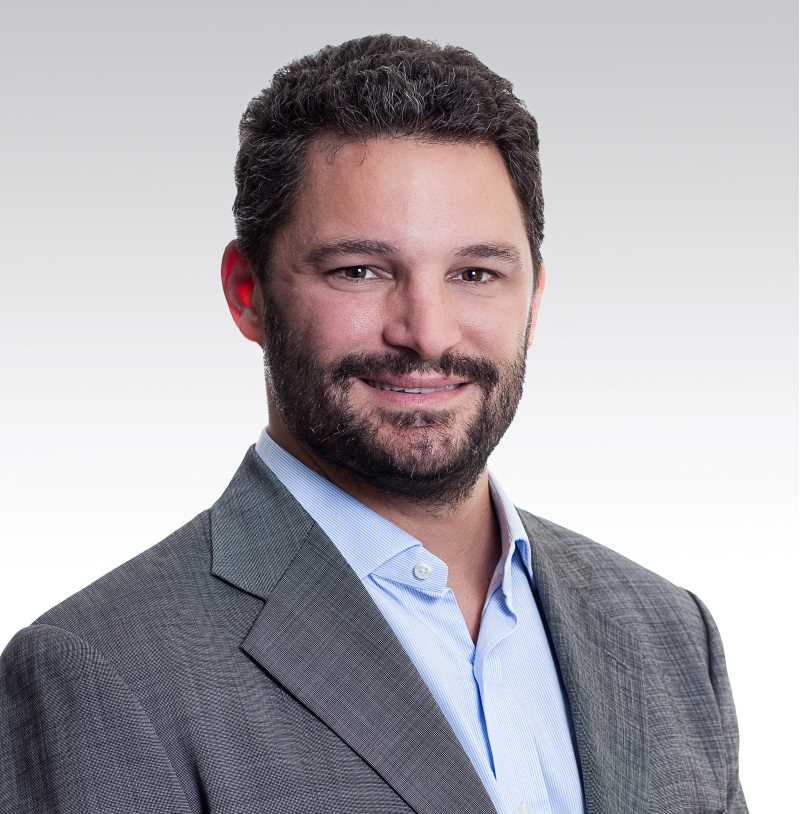Transcripts

Erik: Joining me now is Victor Shvets, global head of desk strategy for Macquarie Capital. Viktor, it's great to get you back on the show. So much we've got to talk about. Let's start with the Federal Reserve and for that matter, we can expand the conversation to central banks generally. Have they become political? Heavens no, it could never happen in the United States, and have they committed a policy error?
Viktor: Well, thank you very much for having me. It's always an interesting question, are central banks political? It's like asking, is any human institution political or not? For the answer, they’re all political in some form. It's all about the degree of independence that you get, but nobody is truly non-political. So, I don't think Federal Reserve or any other central banks are purely technocratic institutions. However, in terms of whether they made a policy error or not, that's an interesting question. Because, to my mind, the inflation, or the problem of inflation was over and done with probably sometime in earlier 2023. That's when I published that team transitory has won, and team transitory was right all along, any inflation after that, pretty much globally, was really anomalies, either statistical anomalies or methodological anomalies, but the underlying inflationary pulse arising out of COVID was pretty much over in 2023. So, the question is, by waiting all the way into ’24, whether central banks have committed a policy error by keeping interest rates above neutral rates. To my mind, they have committed a policy error, but the consequences are not as significant as they used to be.
One of the things I keep emphasizing is that we live in the world of excess surplus capital. We've got abundance of capital, not a constraint shortage of capital. Now, that's quite unique. It only occurred in the last 15, 20 years, and it's been increasing ever since, primarily because money supply has been growing so much faster than nominal GDP. And the difference between the two is this excess capital we have, it's very hard to compute, but on a global basis, I think we have at least $500 to $800 trillion of capital, which means anywhere from 5 to 10 times GDP. So, when you have excess capital, prices don't work as well because there is excess of that commodity, rather than a shortage. Now that helps if you commit a policy error, if you keep rates too high, but there is too much capital moving around, that cushions the real economy.
The second thing we have that we never had before is really instantaneous risk repricing. You know, Federal Reserve makes one announcement, the answer is automatically on a screen within a split second, so you immediately know where there is a problem. And the third thing we have, once again, we didn't have it before, really, is ability of central banks to roll out new policies on a whim incredibly fast. Think of it this way. Federal Reserve, it took them almost a year to become comfortable with QE. It took them at least a month to understand that we need an emergency repo facility back in 2019, but in 2023 it just took 72 hours in order to create a brand new facility to rescue Silicon Valley Bank and essentially end the regional banking crisis. So, if you have too much capital, which we do, in other words, there is no shortage of capital if you have instantaneous repricing of risk, and if you have policies that are designed for specific problems and can't be rolled out incredibly fast, how can you commit a policy error? And more importantly, if you have committed a policy error, you can unwind it incredibly fast, pretty much in a split second, without really damaging the underlying economy so much. Now, I'm not saying that if you decided that inflation is a real problem, and you want to keep, say, policy rates at 5.5%, when neutral rates in the US are closer to 3%- 3.5%, if you keep basis points up for a long period of time, eventually you're going to crash the economy. But why would you do that? If inflation is not really a problem and is unlikely to be a problem as you go forward?
So to answer your question, are central banks political? I think every human institution in some form is political. Number two, have they kept the interest rates, whether Federal Reserve or ECB, too high? The answer is yes, they have. Have they committed a policy error? Yes. Is it going to lead to recession or extremely negative outcomes, either in terms of bankruptcies or bad debts or consumer spending? The answer, no, we're going to end up with a slower growth. We're going to end 3%-3.5%. In the case of eurozone, it's going to be a more like 1.5%-2% lower rates. And we're going to get more liquidity. And if you think of liquidity, if you look at federal reserve balance sheet, they're down to about $3.2- $3.3 trillion in Treasury securities. If you think of reverse repo, they're down to only about $300 billion. They need to continue to unwind the idea of QT, and, in fact, go beyond that and start injecting liquidity. So, my view in the next 18 months, slow growth, but no recession, lower rates and more liquidity. So from an asset classes point of view, and asset prices point of view, what is there not to like? It's almost like a goldilock.

Erik: Joining me now is Saxo Bank’s commodity chief Ole Hansen. Ole prepared a slide deck to accompany this week's interview. You'll find the download link in your Research Roundup email. If you don't have a Research Roundup email, just go to our homepage, macrovoices.com, click the red button above Ole’s picture that says, looking for the downloads. Ole, I love this picture of the 747 on the opening page here. Let's dive into the slide deck and talk about the next page, which, of course, is the table of commodities, lot of things in the green this year. But give us the rundown.
Ole: Well, hello Erik and thank you very much for inviting me back. We passed the halfway mark. And I think the first observation is that if we look at the commodity sector as a whole, we're back to square one. The Bloomberg commodity index, which tracks 24 major commodity futures, is especially unchanged on the year, following a relatively strong rally during the later part of the first quarter and into the second. And then since then, the rally has deflated, and questions are clearly being asked right now, whether that whether rally is done, or what's going on in the market. But as we can also see, it's as per usual, some big movements are unfolding. I think those that has really attracted a lot of attention this year are also the ones that we can see on this performance, where we have precious metals out in front. From a sector perspective, we continue to see gold making new record high. Silver is struggling a little bit recently because of the weakness in the industrial metals, but that seems to be returning as well, as we speak. And then this big divergence in the agricultural space between soft commodities like coffee, cocoa and orange juice and sugar as well. And then grains on the other side, which is really struggling, another bumper crop year across the northern hemisphere, leaving bread prices hopefully relatively subdued into the coming winter. And then in the middle, we got the energy sector, where, basically we are in the Big Three scheme of things. We are trading unchanged almost in crude oil for the past year and a half and the range there is getting increasingly narrow, so obviously something is going to happen eventually.

Erik: Joining me now is Diego Parilla, CIO at Quadriga Asset Management. Diego, it's great to get you back on the show. It's been quite a while. Needless to say, I think what's on everybody's mind these days is okay, what exactly just happened? It was a yen carry trade unwind because of a BOJ policy decision. Oh, wait a minute. They changed their mind. They took it back. Does that mean it's all over? Is this just a correction now? Are we headed higher, or is this just the beginning of a bear market? What should we think about this big risk event that's just happened in the market, and Is it over yet?
Diego: Yeah, thanks Erik for having me back. And for sure, I think what happened is the result of a number of drivers. I mean, first of all, we've had a period of what I would consider to be artificially low levels of volatility, and that has contributed to a number of dynamics, including very successful in crowded carry trades across the board, where the Japanese yen happened to be one of the preferred but not the only funding currency. The other major factor, obviously, is what I would consider the bluff on Japan's idea that you can actually print and borrow your way out of problems at infinite and that bluff has been called. Japan's been leading the monitoring fiscal abuse for the past few decades with zero and negative nominal yields and extraordinarily high levels of government debt, basically driven by this view that the enemy is deflation, and you can literally print and borrow as much as you want without any severe consequences. And so, what's been playing out for the last couple of years, is a reversal of some of those dynamics, with effectively inflation post-COVID being obviously a clear problem. Countries and economies like the US aggressively hiking at a pace in size that had literally no precedents, and people like Japan lagging behind big time, totally unable and unwilling, but mostly unable to do something about it. And that widening rate differential that you know, inflation, that all these factors contributed to pretty much a one-way depreciating yen in a low vol. So, if you add the low volatility trend, wide carry and this spiral of the valuation that leads to dynamics that are effectively very difficult to revert. I think they got into a position that got to a bit of an extreme.
So the BOJ, I think Central Bank of Japan, they're back against the wall. They effectively took the decision to unwind yield curve control. For me, that was really a pretty major point in the fate of Japan, because effectively, with the level of debt that they have, to pretend they can let long term yields to go up somewhat freely is science fiction. It leads to a situation where, as these long-term yields, or yields in general, go up, and you have too much debt, they could result into what I call an LDI2. I mean, you might remember the crisis in the UK, where we had higher yields, weaker Sterling. And this situation got Japan to extreme levels in Dollar/Yen, which effectively forced intervention for the nth time, and were potentially opening the door to force repatriation, or the more extreme measures. I think, once you go into the hikes and the market starts pricing them out, and those actually materialize, I've seen some of these skeletons in the close that come out. Volatility increases, and there's a clear bubble, anti-bubble relationship here between volatility and prices and the CTAs. I think trend followers are big drivers of both moves on the way up and down, and the move in the Nikkei, it's somewhat a bit of a zero sum game in total return terms, because a lot of the strength that we saw in the Nikkei, that everybody felt very happy about, effectively reversing multi decade cycle and making new all-time highs was largely driven by Yen weakness, and so it shouldn't be a surprise that as the yen unwinds and strengthens, then you have this dynamic in the Nikkei.
So, to keep things equal, 20% down move in Dollar/Yen and a 20% up move in the Nikkei, or vice versa, lead to effectively neutral total return game. So I think that all that went to expose that, obviously, the central bank had to step in refrain, or control a little bit some of those expectations with hikes. Because I think what we're seeing is the reaffirmation of the big thesis of the anti-bubble. You know, if you abuse monitoring fiscal policies, eventually the degree of freedom is inflation and the currency. And in some ways, what we've seen is, as Mike Tyson would say, everybody has a plan until they punch you in the face. And I think once you see your currency moving, but worse than that, you see your equity market collapsing and doing 12.5% in a day, worst day since ‘87 and a 20% drawdown in a few days, then obviously forces people to react. So my sense is, implied volatility is picked up. It's still at reasonably high levels. We're off the highs, but still high. But if you look at the VIX and other markets, that's already easing fast. So, my sense is that the carry trade is very much alive. The position has been cleaned significantly. Depending on who you ask, you might hear that that's been reduced to about by 75% and so my sense is Dollar/Yen is going to go back up with a weaker Yen as volatility consolidates in some of these dynamics that we've discussed with rate differentials and others, and inflation and continue to play out. So, I think this is a bit of a canary in a coal mine, you get, again, every time you have artificially low volatility in artificially high prices, or vice versa, they can last for a while. They create a lot of complacency, but when they unwind, they can do it in a very fast and vicious way, which is what we've witnessed. And you know, I think whilst the position is now much cleaner, and probably will see that some of these moves going back to where we were before. There's a bit more caution and perhaps a few people licking their wounds. But yeah, I think the fundamental picture hasn't changed. The big framework has been reinforced. And yeah, there are a lot of structural issues in the system that we need to be mindful about.

Erik: Joining me now is Gavekal co-founder, Louis-Vincent Gave. Louis, any other guest but you, it's so easy to do an August interview. You talk to the guest off the air. It's like, okay, dog days of summer. Nothing happened in the market, nothing to talk about. Let's make something up. We don't have to do that this week, do we? And you know, when the VIX hit 60 on Monday, my first reaction was to look at the calendar, and I thought to myself, wait a minute, I'd have thought we didn't have Louis Gave until tomorrow, because it seems like every time you and I talk, something crazy happens in the market.
Louis: That's right. Thanks for having me on. It's always a pleasure to chat. You probably remember this, but you and I were taping an interview the day the WTI went negative. So with that in mind, I think what I'm going to start doing now is, each time I do a MacroVoices interview, maybe I'll start buying calls on the VIX and, you know, way, way, way out of the money calls and puts on a bunch of asset classes the week or two before we’re slated to talk, because it does seem that there's an uncanny coincidence where each time we're talking, things seem to be melting down.
Erik: Dude, I've already got plans to launch an ETF where basically the strategy is, we know we have inside information. Our producer knows when Louis Gave is on the schedule. We're buying structured, you know, hedge instruments, the Friday before we get you on the show, dude. Anyway…
Louis: It’s the only rational thing to do.

Erik: Joining me now is Commodity Context founder Rory Johnston. Rory, it's great to catch you back on the show. You know, when I saw you on the schedule, I thought I just talked to Rory a couple of weeks ago. It's been months since we've had you on now. Everything's changed, though I guess you and I had a completely incorrect understanding of where this whole OPEC thing was going, because it's just been announced by none other than President Trump's campaign, that what's going on here is OPEC is working as hard as they possibly can to suppress oil prices, because they want to get Kamala Harris elected. I know this is exactly what you've been commenting on in the data that you follow so closely. Maybe not. What's going on here? Is this just politics? And more importantly, what is the real situation with respect to OPEC’s intentions here? What is their real intention?
Rory: Yeah, so that's exactly right. And I think you and I exchanged briefly on Twitter about this. So the statement from former President Trump was essentially along the lines what you said, going all out to depress oil prices in order to help elect Democrats and specifically Kamala Harris, because the belief being that Kamala Harris would be somehow better for OPEC. I assume the reference here is to Kamala’s 2019 statement that she would ban US fracking, which I don't think will ever happen. But again, I mean, it's useful, it's an election year, truth is kind of, and reality is secondary. But I think it's important, and I thank former President Trump for this hook. Because I'm writing a piece right now on really kind of disentangling the true extent of how much OPEC is actually supporting the market. It's important to note that while, we'll get to a second about, the current weakness in the market and what we're seeing, but most forecasters, whether it's the EIA, IEA, OPEC, or a whole bunch of different private sector forecasters, all generally expect that as OPEC extended its production cuts into the third quarter of 2024, that we're going to see a net deficit continued strength, at least in a fundamental basis in the oil market from that. But relative to what Trump was saying about going all out to produce and depress the price of oil, OPEC is doing the exact opposite. It's going all out to support the price of oil, excluding the COVID era cuts because I think those are a special case, but excluding COVID. The current amount of supply that OPEC is withholding from the market roughly 4 million barrels a day of realized tangible cuts relative to October 2022 levels when this new cutting cycle restarted again. That's the most crude that OPEC and OPEC+ is withholding from the market since the 2008/2009 financial crisis. These are crisis level production cuts and market supports. At a time when last year, demand grew by more than 2 million barrels a day. In any other year, this would be considered a strong year for oil markets. The only difference is that OPEC is supporting us multiple, you know $10, $20, $30, $40 higher than we were if OPEC was to completely release, but open the floodgates and release all the crude to the market, we would probably be sub $50 Brent. That's a lot of oil that's being withheld from the market. And I think, while I do not think that OPEC will release that all at once, I think obviously, OPEC, more than anyone else, wants high oil prices. The longer they hold these cuts back the longer they maintain this crisis level support for the market, the weaker discipline and kind of cohesion across OPEC+ becomes, and I think that is just a time series. You know, the longer you go on holding these cuts, the higher the probability that the whole agreement breaks down and the ultimate bearish scenario of all this crude coming back to the market comes all at once.
But if we're just looking at a base case, and that's not my base case, I should be very, very clear. We're looking at a base case, OPEC has said that it's going to start easing the latest tranche, about 2.2 million barrels of oil to 22 million barrels a day of production cuts back into the market beginning in October and extending a year forward into 2025. But if you look at most of the forecasts from the major agencies, IEA, EIA and OPEC itself, most of those agencies really don't seem to indicate that there's going to be enough room in the market to eat all those production cuts back without tanking the price. Now, Saudi oil minister Abdulaziz bin Salman has said that that plan is market dependent and I believe him on this. I think that it's unlikely that OPEC is going to go ahead with a full production cut easing, I think at best, they're going to do half and probably even less than that. But I think we're going to need to wait to see where we are, come October, to see when and how exactly they stickhandle the messaging around pushing that back. Because I think it's even more important than the message, the market is seeing the message to the membership because the reason that they had announced that cut easing was that they were trying to placate members, particularly the United Arab Emirates, which has been promised continually that they're going to be allowed to produce more just one day, just around the corner and so far, we haven't seen that
MACRO VOICES is presented for informational and entertainment purposes only. The information presented in MACRO VOICES should NOT be construed as investment advice. Always consult a licensed investment professional before making important investment decisions. The opinions expressed on MACRO VOICES are those of the participants. MACRO VOICES, its producers, and hosts Erik Townsend and Patrick Ceresna shall NOT be liable for losses resulting from investment decisions based on information or viewpoints presented on MACRO VOICES.
